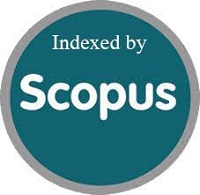Analisa Item Response Theory Wonderlic Personnel Test (WPT)
DOI:
https://doi.org/10.15408/jp3i.v8i1.10819Keywords:
wonderlic personnel test, item response theory, analisis item item response theory, item analysisAbstract
Abstract
Wonderlic Personnel Test (WPT) is a psychology tool that measures individual cognitive abilities based on measuring the level of learning ability, understanding the instruction, and solving the problems. In this study, WPT items were tested using the Item Response Theory (IRT) method. There were 374 participating subjects and the results of the study showed 31 items are fit with the model, while 19 items were misfit. According to the IRT 2PL model analysis, mean of examinee ability was -0.01 (SD=1.19). The mean of difficulty (b) was 0.48 (SD=2.58) and meand of discriminant (a) was 0.62 (SD=0.38). WPT test is indicated to consist of items were misfit, that do not measure the same dimension. These statistical results are in line with the characteristics of WPT which are built from three abilities to measure intelligence.
Abstrak
Wonderlic Personnel Test (WPT) merupakan alat ukur psikologi yang mengukur kemampuan koginitif berdasarkan pada pengukuran tingkat kemampuan belajar, memahami instruksi, dan memecahkan masalah. Dalam penelitian ini dilakukan uji terhadap aitem WPT dengan metode Item Response Theory (IRT). Terdapat 374 subjek yang berpartisipasi dan hasil penelitian menunjukkan 31 aitem sesuai dengan model, sedangkan 19 aitem lagi tidak sesuai. Menurut analisis IRT model 2PL, rata-rata kemampuan peserta adalah -0.01 (SD=1.19). Sedangkan untuk rata-rata tingkat kesukaran (b) sebesar 0.48 (SD=2.58) dan rata-rata daya beda (a) sebesar 0.62 (SD=0.38). Tes WPT diindikasikan terdiri dari aitem yang tidak mengukur satu dimensi yang sama. Hasil statistik ini sejalan dengan karakteristik WPT yang dibangun dari tiga kemampuan untuk mengukur tingkat kecerdasan.
References
Chamorro-Premuzic. T.. Dissou. G.. Furnham. A.. & Bales. A. (2010). Personality traits and lay conceptions of intelligence. Personality Traits: Classifications. Effects and Changes.
Dodrill. C. B. (1981). An economical method for the evaluation of general intelligence in adults. Journal of Consulting and Clinical Psychology. https://doi.org/10.1037/0022-006X.49.5.668
Fischer. H. E.. Boone. W. J.. Fischer. H. E.. & Boone. W. J. (2014). Quantitative Research Designs and Approaches Quantitative Research Designs and Approaches University of Duisburg-Essen . Essen . Germany Knut Neumann Leibniz-Institute for Science and Mathematics Education ( IPN ). Kiel . Germany. (October 2015).
Hicks. K. L.. Harrison. T. L.. & Engle. R. W. (2015). Wonderlic. working memory capacity. and fluid intelligence. Intelligence. 50. 186–195. https://doi.org/10.1016/j.intell.2015.03.005
Kazmier. L. J.. & Browne. C. G. (1959). Comparability of Wonderlic test forms in industrial testing. Journal of Applied Psychology. https://doi.org/10.1037/h0045688
Kusdiyati. S. (2018). Studi Korelasi Wpt ( Wonderlic Personnel Test ) Dan Ist ( Intelligenz Structur Test ). Psympathic : Jurnal Ilmiah Psikologi. 3(1). 59–76. https://doi.org/10.15575/psy.v3i1.2177
Lord. F. M. (1952). A Theory of Test Scores. Psychometric Monograph No. 7. (7). 84. https://doi.org/10.1039/tf9524800166
Matthews. T. D.. & Lassiter. K. S. (2008). What Does the Wonderlic Personnel Test Measure? Psychological Reports. 100(3). 707–712. https://doi.org/10.2466/pr0.100.3.707-712
Ostini. R.. & Nering. M. (2012). Polytomous Item Response Theory Models. Polytomous Item Response Theory Models. https://doi.org/10.4135/9781412985413
Sudaryono. (2011). Implementasi Teori Responsi Butir ( Item Response Theory ) pada Penilaian Hasil Belajar Akhir di Sekolah. Jurnal Pendidikan Dan Kebudayaan. 17(16). 719–732.
Yang. F. M.. & Kao. S. T. (2014). Item response theory for measurement validity. Shanghai Archives of Psychiatry. 26(3). 171–177. https://doi.org/10.3969/j.issn.1002-0829.2014.03.010
Zanon. C.. Hutz. C. S.. Yoo. H.. & Hambleton. R. K. (2016). An application of item response theory to psychological test development. Psicologia: Reflexao e Critica. 29(1). https://doi.org/10.1186/s41155-016-0040-x



